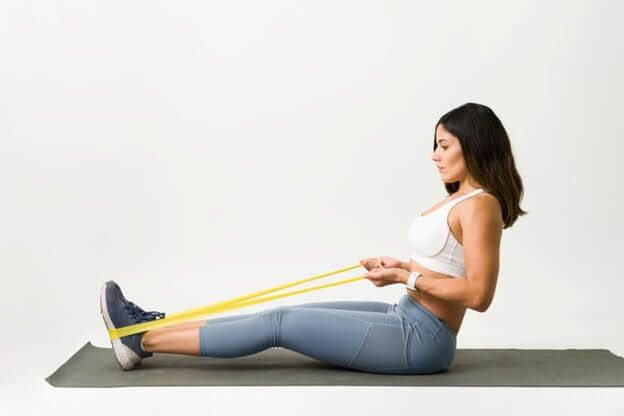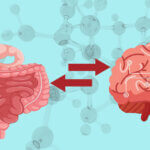Overview of Dystonia and Exercise
Dystonia is a neurological movement disorder in which the affected person’s muscles begin to spasm, stretch, or contract involuntarily, which can cause pain and an abnormal posture (disability). Dystonia usually starts in one part of the body and can gradually affect different parts of the body. Dystonia effects include the neck (cervical dystonia), limbs (focal dystonia), face (cranial dystonia), and other muscle groups. Although the exact underlying cause of dystonia is not always clear, many researchers and our dystonia specialist doctors in Mumbai speculate that it may be largely related to abnormal neural functioning of the brain in addition to genetic and environmental factors. Dystonia treatment in Mumbai, a part of the Stereotactic and Functional Neurosurgery program at Jaslok Hospital. Our dystonia doctors ensure accurate identification of dystonia and its root causes with state-of-the-art diagnostic techniques. However, they agree that resistance training (exercise), also known as strength training or weight training, can be a valuable approach to building strength safely with dystonia considering their unique challenges. The role of exercise in dystonia management through resistance training is to enhance your overall quality of life while building strength, improving muscle function, improving motor control, dystonia pain management, and improving mood and mental well-being. Here is an overview of how exercise can be beneficial in adaptive resistance training for dystonia, according to dystonia specialist doctors at our dystonia clinic in Mumbai.
The Benefits of Exercise for Dystonia Patients
In dystonia management through resistance training, a carefully planned exercise routine can be beneficial for dystonia patients. Strength training for dystonic muscles, like body weight exercises, resistance band workouts, or exercises with free weights and machines are among the adaptive resistance training for dystonia. It improves muscle function and is effective for improved motor control, dystonia pain management, and improved mood and mental well-being. Dystonia patients are often seen to be unable to control their movements (physical balance, strength, and stamina) and as a result, they struggle with pain and mental problems. The team of dystonia specialist doctors at our dystonia center in Mumbai is experienced in dystonia management. We can create a personalized dystonia treatment plan for you to help you manage dystonia through resistance training.
Potential Neuroprotective Effects
Neuroplasticity is an important neurological process that is the ability of neurons to change their structure and function during a disturbance in the human brain. This means that the brain can adjust its structure and improve its functions based on a variety of responses. According to dystonia specialist doctors in Mumbai, muscle contractions of a dystonia patient are usually the result of disrupted nerve signaling, so stimulating neuroplasticity in dystonia management through resistance training helps the brain to reorganize and control the movements. Adaptive resistance training for dystonia increases the production of neurotrophic factors by promoting blood vessel formation and adult neurogenesis in the brain, which may mediate improvements in cognitive functions and various forms of memory in dystonia patients. However, the relationship between exercise and neuroprotection in resistance training may vary depending on the type of dystonia and individual factors.
Improved Muscle Function
It is generally seen that dystonia causes posture problems along with muscle imbalance, in which some muscles become weak and their contraction causes tension and pain. In such a situation, performing targeted exercises involving resistance training and strength training for dystonic muscles can help restore muscle balance while strengthening the weak muscles. According to dystonia expert doctors, the goal of exercise in dystonia management is not only to improve muscle function but also to enhance the overall quality of life by managing dystonia symptoms and increasing the functional capacity of weak muscles. Adaptive resistance training for dystonia forces muscle fibers to repeatedly contract and stretch which can help improve muscle function and joint mobility and increase motion in dystonia-affected areas. This can help the dystonia patient achieve a greater amount of muscle flexibility, improving overall muscle function and ease of movement.
Enhanced Motor Control
Motor control or motor function is part of the neurological process in the brain that coordinates and controls muscle activity. Problems with motor control usually include weakness in the legs, weak hand grip, or stiffness, cramps, and pain in the body and muscles. These are all included in the dominant symptoms of dystonia. It has been confirmed by various researchers that exercises stimulate the repair response of the body. Exercise increases blood supply and oxygen supply to the body, resulting in increased nutrient delivery to the brain, which can stimulate neurogenesis and motor neuron activity. Additionally, dystonia specialist doctors say that dystonia management through resistance training can be an effective option, in which the nervous system and muscles may be retrained to work together more effectively through special exercises and training. For example, doing exercises that focus specifically on posture and alignment can help manage dystonia symptoms more effectively, by improving posture and coordination and control over muscles.
Dystonia Pain Management
Dystonia pain can be caused by muscle contraction or stiffness, which can be worsened by lack of exercise or not doing adaptive resistance training for dystonia. Exercise and resistance training can help improve muscle function and joint mobility and increase range of motion, although supervision and consultation with a dystonia specialist doctor for specific strength training and coordination exercises may be important. Strength training for dystonic muscles can reduce the severity of involuntary muscle contractions. This is why exercise is always considered part of a holistic approach to dystonia pain management in combination with health care and therapies to treat dystonia in Mumbai.
Improved Mood and Mental Well-Being
Improved mood and mental well-being can be achieved by adaptive resistance training for dystonia. Exercise triggers the release of endorphins and other hormones like cortisol, which help in the smooth functioning of the brain. These natural chemicals help improve mood reduce feelings of anxiety and depression, and promote a sense of overall well-being. Additionally, exercise can help regulate sleep patterns and improve sleep quality. Better sleep can have a significant impact on the mood and mental health of a dystonia patient. Although dystonia management through resistance training is not a standalone solution there should be a comprehensive approach to dystonia management, which may include psychological support and interventions in addition to medical treatment, and physical therapy.
Types of Resistance Training for Dystonia
Strength training for dystonic muscles, improving balance and overall function, and building strength safely can be beneficial for individuals with dystonia. However, when incorporating adaptive resistance training for dystonia into an exercise routine, it is essential to work with a dystonia specialist doctor at a dystonia clinic in Mumbai. Our dystonia doctors and his team can help design an individual and customized exercise program, ensuring we know which exercises are safe and appropriate for the specific needs of dystonia. The stereotactic and functional neurosurgery program at Jaslok Hospital, Mumbai can provide guidance on appropriate techniques to reduce the risk of dystonia or aggravate dystonia symptoms. Here are some options to consider for managing dystonia through resistance training:
Body Weight Exercise
This strength training exercise for dystonic muscles uses your body weight as resistance. Examples include push-ups, squats, lunges, planks, and wall sits. Bodyweight exercises can be adapted to the individual’s fitness level and dystonia type.
Resistance Band Workout
Resistance bands (large elastic bands) are flexible, portable, and versatile tools in adaptive resistance training for dystonia. They come in different levels of resistance, suitable for all fitness levels. Resistance bands can be used to target different muscle groups during exercise and can be customized to your needs.
Free Weights and Machines
Free weights and machines both train to target specific muscle groups, where free weights, like dumbbells, and barbells, provide adjustable resistance, while machines like leg press machines, seated curl machines, and treadmills provide guided movement and controlled resistance. This makes them suitable dystonia. It can help improve muscle strength and stability while reducing the risk of worsening symptoms in dystonia management.
Preparing for Resistance Training
The goal of adaptive resistance training for dystonia is to not only improve muscle function but also to enhance overall quality of life by managing symptoms and increasing functional capacity. In such a situation, consultation with a dystonia specialist doctor and creating an individualized exercise plan can be an important step to ensure the preparation and adjustment of resistance training. Adaptive resistance training for dystonia may vary depending on the type of dystonia and individual factors.
Consulting a Dystonia Specialist Doctor
The dystonia specialist doctors at our dystonia clinic in Mumbai take a comprehensive approach to improving muscle function, reducing pain, and enhancing the overall quality of life of a dystonia patient. Combining adaptive resistance training or exercise with other treatments or interventions for dystonia can maximize the potential benefits of dystonia management. Dystonia specialist doctors and his team at Jaslok Hospital provide guidance on the exercises you need to do depending on your specific symptoms along with your treatment and diagnosis.
Creating a Personalized Exercise Plan
Dystonia is a highly variable condition, and the optimal exercise approach may vary from person to person. One of our dystonia specialist doctors can work with you to create an individualized exercise plan tailored to your specific needs and limitations. Our assessment will help determine the most appropriate exercise program for your situation. However, to create a personalized exercise plan you can focus on:
-
Choose appropriate exercises:
Choose adaptive resistance training for dystonia that is safe and appropriate for your condition, these exercises can include strength training, flexibility and mobility exercises, balance exercises, and coordination exercises.
-
Customize the plan:
Tailor the exercises to your abilities and limitations. That is, focus on exercises affecting specific body parts that address dystonia.
-
Progressive overload:
Gradually increase or combine the intensity and duration of your exercises to promote improvement, not loss, of muscle function and strength.
-
Safety Precautions:
Pay close attention to building strength safely with dystonia. If you experience dystonia pain or dystonia symptoms increase, stop exercising and consult your dystonia doctor.
-
Assistive devices:
Depending on your situation in strength training for dystonic muscles, use assistive devices or adaptive devices to make the exercises more comfortable and effective.
-
Progress monitoring:
Keep a journal to track your progress, observing changes in your dystonia symptoms, pain levels, and improvements in muscle function.
Enhance core strength with Pilates in movement disorders. Explore our blog post: Pilates for Core Strengthening in Movement Disorders
Resistance training can be a valuable and effective approach to safely building strength for individuals with dystonia. Dystonia, a complex neurological condition, presents unique challenges, but a well-designed adaptive resistance training program for dystonia can provide many benefits. The dystonia specialist doctor at Jaslok Hospital can work with you to create personalized exercise plans that are tailored to your specific needs, limitations, and goals.
Adaptive resistance training for dystonia can help improve muscle function, reduce dystonia pain, enhance motor control, and promote better mood and mental well-being. However, safety and caution are paramount, and exercises must be carefully selected and executed. To ensure that the exercise program remains effective and safe, regular monitoring, adjustments, and constant communication with dystonia specialist doctors are essential.
By combining the benefits of dystonia management through resistance training with dystonia doctors guidance, individuals with dystonia can not only build strength but also take important steps towards quality of life and dystonia management as per their condition. In this way, resistance training serves as a powerful tool in the journey to living well with dystonia.









